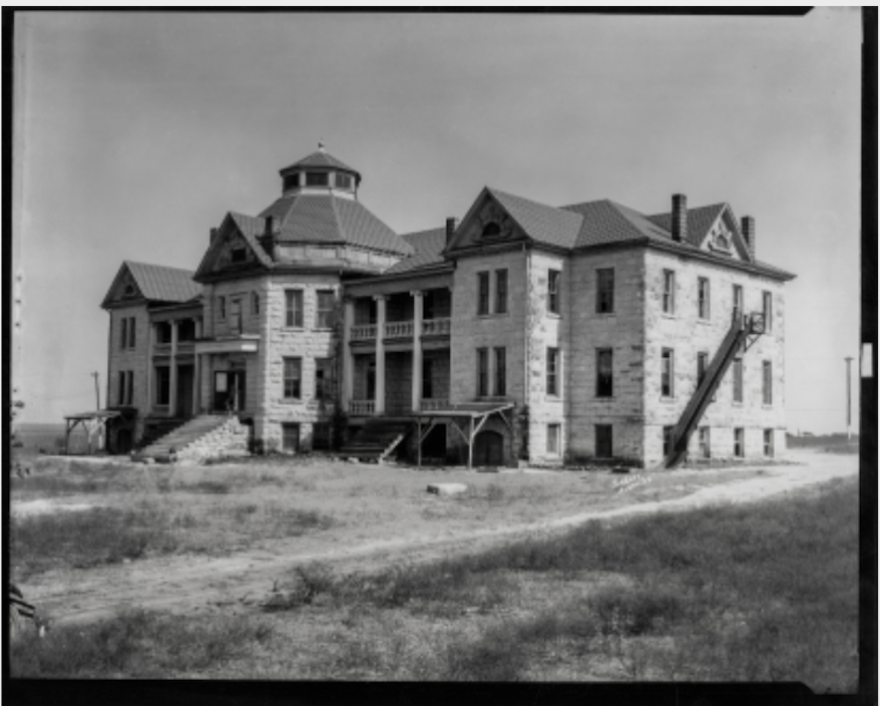There’s a swath of land in North Austin along Interstate 35 that has had many uses. It has been an orphanage, an elementary school, a Home Depot and COVID-19 testing site.
Next? Maybe housing and office space.
On Thursday, members of the Austin City Council agreed to enter into a contract with a real estate developer and a local public housing authority to redevelop the city-owned site in the St. Johns neighborhood. Council members voted unanimously in favor of the contract.
"There's still work to be done to make us really proud of this ... but this is a really, really important step,” said Council Member Greg Casar, who represents Central North Austin and the district that includes this piece of land.
The Housing Authority of Austin and Greystar, a rental housing developer with at least two dozen complexes in the city, have proposed building 560 rental units on the plot of land. Half of those homes would be restricted to people and families making less than 70% of the median income, or no more than $69,250 a year for a family of four.
The developers have also proposed building a roughly 2-acre park and 15,000 square feet to house businesses and community services. They have said they can start construction as soon in 2022.

But Casar, neighbors and activists say these plans are not set in stone. Once the contract is inked, they say they can begin negotiating some changes, including increasing the amount of housing and adding homeownership options.
The developers said Thursday they are open to those ideas.
“I think there’s so much more we collaborate [on] and produce here,” Ron Kowal, vice president of real estate development at the Housing Authority, told the council.
In 2006, the City of Austin bought 19 acres of land in the St. Johns neighborhood using bond money approved by the voters that same year. The plot included a Home Depot store and a car dealership.
The original plan was to build a police substation and courthouse on the property, but that never materialized. (Because the city borrowed money to construct a facility that never got built, one of the requirements for the new project is for the developer to pay off the city’s bond, totaling about $10.8 million.)
Instead, the city began using the land for storage, stowing away decommissioned traffic lights and green composting bins. Neighbors continued to ask: When will something more permanent go here?
In 2017, council members responded, passing a resolution asking the city to begin talking to community members about what they would like to see get built on the land.
One of those community members was Cherelle VanBrakle, who grew up in the St. John’s neighborhood. She remembers tagging along with her dad as a kid to the now-defunct Home Depot.
“Growing up my dad had an AC business, so we were at Home Depot like 24/7,” she said.
VanBrakle works at a health clinic in the neighborhood. She wanted to buy a home nearby, but couldn’t afford to; she ended up buying a house east of the city, in Manor.
“I’ve been displaced,” said VanBrakle, who is Black. “Since enslaved people first came to Austin and started the free colonies, we have continuously been displaced.”
In the late 19th century, a group of pastors bought 350 acres of land in the area and founded the St. Johns neighborhood as a home for formerly enslaved people. They opened an orphanage and a school and began selling plots of land to Black families who moved there.

“That’s why this neighborhood is so historic for African-Americans — because we’ve been here for such a long time,” said Rev. Daryl Horton, a pastor at Mt. Zion Baptist Church in East Austin.
But as time went on, Black residents began making up a smaller portion of the population, a phenomenon that has happened throughout Austin. According to numbers from the 2000 U.S. Census, 13% of the people living in the ZIP code that includes St. John identified as Black; 10 years later that number dropped to 11%.
The neighborhood is now majority Hispanic and Latino.
In 2018, researchers with the University of Texas at Austin looked at which Austin neighborhoods were most vulnerable to gentrification. In their report, the authors identified St. Johns as one of the neighborhoods in the early stages of gentrification, noting that more than half of new mortgages taken out for homes in the area were by white homeowners.
Cesar Acosta, who has lived in the neighborhood for six years, says that even though both he and his wife have “decent-paying” jobs, they can’t afford to buy a home in the neighborhood.
“It’s not something that’s sustainable for current residents to live in,” Acosta said.
Acosta, who works as an urban planner in Georgetown, joined community meetings about development at the former Home Depot site after seeing a sign posted in his apartment building. He said he also would like to see some changes to the initial proposal — including affordable homebuying options— but that he’s generally supportive of the plan on the table.
“This isn’t the end,” Acosta said. “This is just a first option. And it’s a good first option.”
Got a tip? Email Audrey McGlinchy at audrey@kut.org. Follow her on Twitter @AKMcGlinchy.
If you found the reporting above valuable, please consider making a donation to support it. Your gift pays for everything you find on KUT.org. Thanks for donating today.








